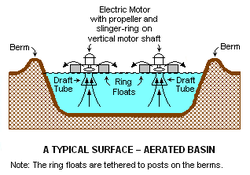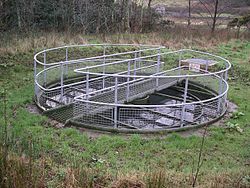
Wastewater treatment is a process which removes contaminants from wastewater. The resulting effluent, discharged to a water body, has an acceptable impact on the environment. [1] Domestic wastewater, also called municipal wastewater or sewage, is processed at a sewage treatment plant. Industrial wastewater is often processed at a specially-designed industrial wastewater treatment facility, [2] or at a sewage treatment plant. In the latter case the industry typically performs on-site pretreatment of the waste, before it is sent to the municipal plant. Other types of wastewater treatment plants include agricultural wastewater treatment and leachate treatment plants.
Contents
- Types of treatment plants
- Sewage treatment plants
- Industrial wastewater treatment plants
- Agricultural wastewater treatment plants
- Leachate treatment plants
- Unit processes
- Phase separation
- Biological and chemical processes
- Polishing
- See also
- References
- External links
The term "wastewater treatment" is often used to mean "sewage treatment". [3]
Common processes in wastewater treatment include phase separation, such as sedimentation, various biological and chemical processes, such as oxidation, and polishing. The main by-product from wastewater treatment plants is a type of sludge that is usually treated in the same or another wastewater treatment plant. [3] : Ch.14 Biogas can be another by-product if the process uses anaerobic treatment.
Treated wastewater can be reused as reclaimed water. [4] The main purpose of wastewater treatment is for the treated wastewater to be able to be disposed or reused safely. However, before it is treated, the options for disposal or reuse must be considered so the correct treatment process is used on the wastewater.







